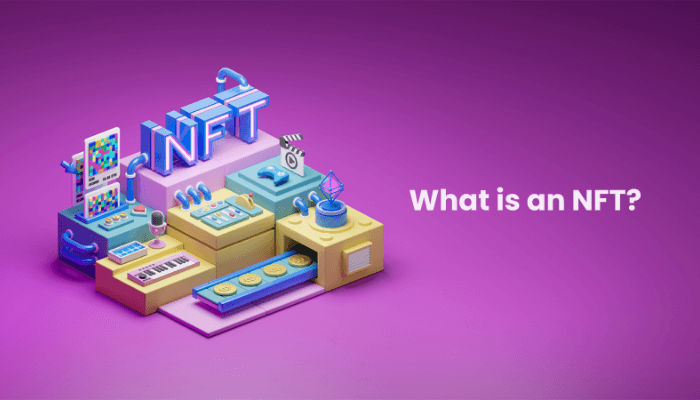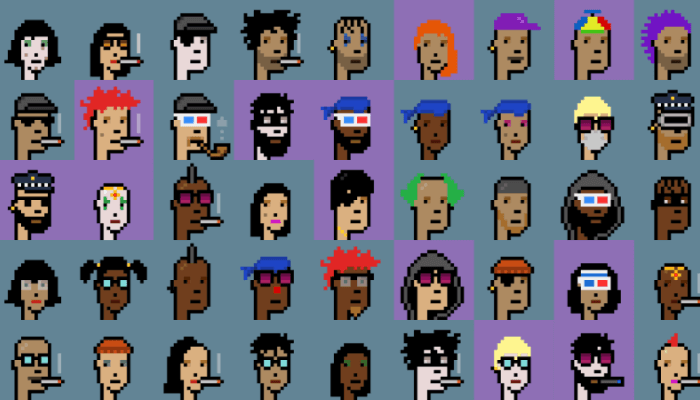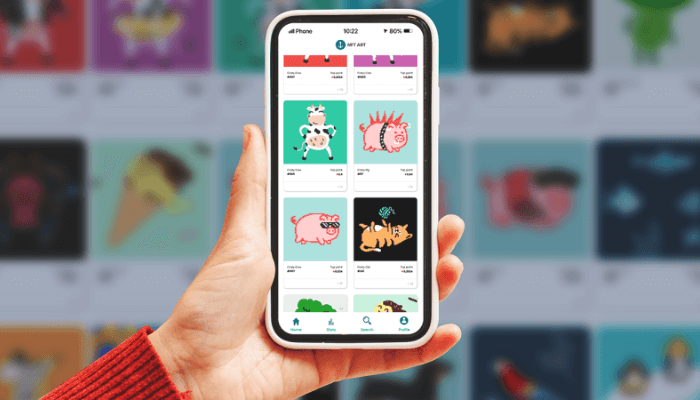https://nasacademy.com/blog/article/how-to-make-an-nft

NFTs have taken the world by storm. Once a fringe movement associated with crypto, today, NFTs are a global innovation that everyone wants to get in on. So many are opting to learn how to invest in NFTs, and many even want to learn how to make an NFT of their own and mint it.
As an artist, creating NFTs is actually becoming a viable way to make a living from your work. And while this might seem risky or tricky, it doesn’t have to be – as long as you know what you’re doing.
That’s why we’ve compiled this guide to help you get started.

First thing’s first – what actually is an NFT? NFT stands for non-fungible token. When something is “fungible”, it means that it is something replaceable, or exchangeable. For example, if you and a friend each had one dollar bills, you could swap them and you’d still have something of the same value. Dollar bills are fungible – Bitcoin is fungible. However, “non-fungible” is the opposite.
It’s an asset that is completely unique and irreplaceable.
For example, if you had the real version of the Mona Lisa, and your friend had a copy of the Mona Lisa – you probably wouldn’t do the same swap. The original Mona Lisa is unique and worth far more than a copy of it, even though they look the same. Therefore, The Mona Lisa is considered “non-fungible”.
When you upload art to the crypto blockchain, it is turned into an NFT. Meaning that the piece of art is embedded into the blockchain, and cannot be replicated — even if it’s right clicked and saved to someone’s computer, the art will not register as the original work.
NFTs have the potential to change the way the internet is used, particularly when it comes to digital creations. Digital art theft has long been a problem for artists, and NFTs are a possible solution that can help creators get compensated for their work. Unfortunately, this isn’t necessarily true in practice, as stolen art has also been uploaded to the blockchain, barring the original artist from official ownership of their own creation.
However, if the blockchain is used correctly, NFTs can be a great tool for artists.
Uploading and selling NFTs is called “minting”. You can sell NFTs you already own by trading, or you can mint your own NFT, and then trade it.
There are fees attached to minting and trading NFTs. These include gas prices, which cover the costs of powering the blockchain (and the reason the blockchain is responsible for more carbon emissions than some countries – a problem some investors are trying to fix to make crypto more sustainable).
There’s also a service fee. These fees are paid through your crypto wallet, which needs to be funded before you can engage in buying and selling NFTs.
Many hidden costs also come with minting your own NFTs – which is something artists need to consider as well. These costs can add up fast, and become more expensive than the price you can get back for your NFT. This means that you’ll need to have some form of capital to begin participating in the blockchain.

The NFT trade functions a lot like auction houses, where NFTs are bidded for and the highest bidder gets the prize. The more people bidding, the higher the price. This is why collections are so popular – creating scarcity means increasing the value of the NFT, and thus raising the price. So if you’re looking to sell an NFT at a high price, you’ll want to create a limited NFT collection.
Because of this digital scarcity, some NFT minters create NFT drops where they release the NFT at a certain time. NFT collectors and investors wait for drops with their crypto wallets already funded, so they can scoop up valuable NFTs before thousands of others do. NFT drops can be sold out within seconds, so it’s largely a matter of luck and timing – and preparation.
NFT investors find out about these drops mainly through Twitter and Discord servers, so it’s worth finding your favorite NFT minters, and joining their servers to stay up to date. Once your NFT creations gain popularity, create your own Discord servers to announce impending drops and create hype – this way, you can drive up the value of your NFT drops.
Collections and drops are all great ways to drive up the prices and value of your NFTs, and they are common practice amongst NFT minters and investors.
However, this has faced some criticism because the high prices create a paywall for ordinary people who cannot afford the costs of gas and service fees – making NFTs a system only available to the already rich. This doesn’t help artists who want to use NFTs to kick start their careers, unless they already have a sizable bank account.
That said, there are other ways to get started with NFT investment, such as joining NFT communities, which sometimes do free NFT giveaways. Investing in opportunities such as this could be the perfect way to start out on your NFT investment journey.
NFTs have become a household name because of the extremely high sales attached to them. Beeple’s NFT artwork was sold for a record-breaking $69 million through the auction house, Christie’s. This gave NFTs legitimacy and gained the attention of the world.
Other popular NFTs are the Bored Ape Yacht Club, and CryptoPunks, which sell for an average of $45,000 a piece.
Although NFTs have come to be known as pieces of art, they can actually be anything – from music, to trading cards, to memes, to tweets.
Nyan Cat was sold as an NFT. If it’s digital, it can be an NFT.
With that said, don’t go screenshotting someone else’s work (or tweets) and uploading that to the blockchain, as you’re likely to run into legal trouble along the way. If you’re an artist, creating your own NFTs with clever and catchy designs and style are more likely to grab the attention of investors.
Start small, and work your way up. See what others are minting, what’s popular, and what gets ignored. Remember that you have to cover the costs of service and gas fees – so make sure you have the money to mint before you get started.
Trying your hand at a collection is a great place to start. It can give you experience with the blockchain, and owning pieces of a collection adds value and intrigue for traders and investors. It also gives you the opportunity to master certain styles of art, whether it be pixelated or more detailed pieces. No matter your style – make it unique, make it reflect your unique techniques, and make it exciting.

Think about the software you need to mint NFTs. Because some of it infringes copyright when uploaded to the blockchain. This is more common if you use apps that create NFTs for you – and they also make you pay a fee to mint it as an NFT. Creating your own art from scratch, using something like Photoshop or Illustrator are a better option if you want to lower the fees you need to pay.
Ethereum is one of the most popular blockchains for crypto currency (crypto currency is officially called ETH) but others are gaining traction such as Binance, Smart Chain, or Polkadot.
Different blockchains use different crypto wallets, so make sure you know which platform you want to use before funneling ETH into your crypto wallet.
Getting a crypto wallet is a relatively easy task, but it takes some know-how of how crypto works. There are two main kinds of wallets — hosted and self-custody.
Hosted wallets function much like a bank, where a third party takes care of your money. The advantage of this is that your money is secure, and accessing it doesn’t rely on you remembering your password. The drawback is that you can’t access some crypto functions with this type of wallet.
Self-custody wallets give you complete control over your wallet and how you use it, but it’s also riskier and less secure.
Overall, what you want to use your wallet for is the deciding factor. If you just want to mint and trade NFTs, the simplest option is a hosted wallet.
If you’re ready to set up your wallet, follow these steps:
Unlike minting NFTs, setting up your crypto wallet is free. You just need to fund it to do anything with it.
Whatever platform you choose, it’s a good idea to research them beforehand to understand how they work. Despite the relative simplicity of minting NFTs, it’s still a risky venture. You don’t want to get scammed by selling an NFT to someone, just to have them turn around to sell it later for far more than they paid. Do your research, listen to other people’s stories, and know what to look out for,
Now that you have your art collection and funded crypto wallet, it’s time to choose how you want to sell your NFTs. Remember how earlier we said that selling NFTs is like an auction? This means that you can choose multiple platforms to auction your NFT.

The most popular at the moment are OpenSea, Rarible, SuperRare, and Nifty Gateway. Different traders favor different platforms for different reasons – so take a look at these sites, and decide which one you’d like to trade on.
Once you’ve chosen your NFT platform, connect your crypto wallet to it. There’s usually an easily found option to connect your wallet, and upload your NFT.
Finally, follow the instructions on your platform and choose what form of sale you’d like to use. Usually you’re given the choice of three different options:
Follow the instructions your platform gives you. And beware – this can be confusing at first, especially with crypto’s ever expanding list of jargon.
Another pitfall are the fees, which are hidden behind confusing terms and ambiguous words. Be prepared to pay far more than the original stated fee. Because of this, it’s important to ensure you have enough money to fund the blockchain before you begin this process, and sell your NFT for enough to cover the basic expenses.
For the first time ever, top experts have come together with Nas Academy to form a web3 learning community – and you’re invited!
Whether you’re launching an NFT project, investing in Bitcoin or NFTs, or are curious about how web3 works, you’ll discover that “community” is the foundation of the web3 space. And now, you can join a vibrant and supportive community full of web3 enthusiasts like yourself.
This community offers a safe space to network, learn, and collaborate with some of the most innovative thinkers around the world. On top of that, we’ve pooled all our resources to give you access to thousands of dollars worth of Nas Academy resources (including our best-rated classes) all under 1 subscription.
By subscribing to the Nas Academy Web3 Community, you’ll also be invited to join exclusive events and workshops with the world’s leading experts – an opportunity that you won’t easily find anywhere else. So, if you’re looking to learn more and discuss web3 with others who share your interests, subscribe today and join the movement that’s changing the Internet.
By Team Nas Academy
By Team Nas Academy